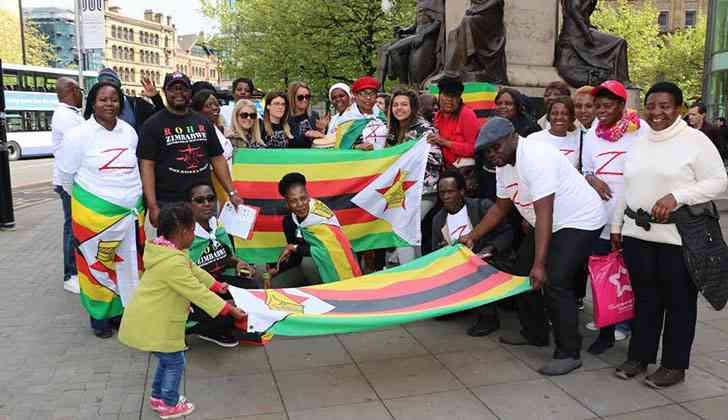
THE basic function of exchange rate policies in any country is to determine, hour by hour, day by day, the value of its own currency against the value of foreign currencies that are important to that country for trading purposes. The consequential exchange rate is possibly the most important single price in an economy and determines the prices of just about everything else.
During the Rhodesian era the country did not have a significant foreign exchange surplus and for this reason the country ran a managed system which imposed strict exchange controls, limited imports and external transfers. It was well managed and strict. This system was made even more necessary when the country was placed under United Nations mandatory sanctions after 1965.
A secondary function for a currency exchange system is to clear supply and demand for foreign currencies in the domestic market. In the Rhodesian era, this was achieved by controlling the use of what currency was available and controlling its allocation and use.
The exchange rate was not, therefore, market driven, it was managed and throughout this period of our history the local currency was maintained at very strong levels. In the mid 50’s, the rate was more than 2 to 1 against the British Pound and at Independence it was still 2 to 1 against the United States dollar.
This policy would have had a serious impact on the domestic economy had there not been tight exchange controls on imports. These protected domestic producers and by Independence the country was almost self-sufficient in local goods. However, behind the façade of this self-sufficiency was the reality that most of the industry involved was inefficient and uncompetitive. Our export industries survived because they were predominantly commodity driven and we were price takers in global markets. But these policies restricted foreign investment and, therefore, basic economic growth.
In other parts of the world, very different policy strategies were being pursued. Under the influence of the United States and the World Trade Organisation, the nations of the world were being urged to adopt more free trade and this opened up global trade and this laid the foundation for rapid growth in international trade which averaged 15% per annum for 50 years after 1970. Zimbabwe was born into this new world order and found itself ill-prepared for the new challenges.
In addition to this new challenge, the new government inherited a civil service which did not really understand the new world order. It found exchange controls entrenched and an industrial base that resembled an industrial museum. Local business leaders, happy to operate behind the protective wall of exchange control, did not want change. They feared change.
Out in the big new world, countries were emerging as the new industrial giants, fostered by three things – access to global markets, the availability of the cash surpluses created by the peace that followed World War II and the transfer of technologies from the West to the East. But what is less well known is that these new industrial giants were manipulating their currencies, not in the way the Rhodesians had, but by making sure that their own currencies were undervalued. The reason – they recognised that the future was not with commodity trading, but trade in finished goods and here they had to compete not only in quality but also in price.
- The brains behind Matavire’s immortalisation
- Zim’s poor batting hands India series
- Proposed raids on grain farmers raises stink
- Red Cross work remembered
Keep Reading
An undervalued currency made labour cheaper than it might have been, it also inhibited the cost of basic supplies and services that had a domestic origin.
It made imports more expensive but they shared the interests of the developed world who wanted to restrain world commodity prices for their own use. The consequences are there for all to see, global industrial output has shifted to the Far East where Japan, China and India now control half the world economy.
At home we did everything wrong. We retained exchange controls – partly because the private sector wanted them and partly because it created opportunities for corruption. We overvalued our domestic currency falsely claiming that a “strong” dollar was a symbol of strength.
This encouraged imports, discouraged exports, further inhibited our foreign exchange balance and laid the foundation for what was to follow. To complete the mix, we deliberately ran an unsustainable fiscal deficit of over 9% for the first two decades of independence, increasing our national debt by over 10 times and weakening our productive base with no new investment and low productivity. Only agriculture thrived.
What happened next was inevitable, the war veterans demands and the decision to enter the war in the DRC, tipped us over the edge and when we started printing money to pay debts, our currency collapsed and inflation reached world record levels.
Then on February 17, 2009, then Finance minister Patrick Chinamasa adopted a multi-currency system for payments, abolished exchange control and completely liberalised the markets for currency. He just held his nose and jumped off the bridge, abandoning everything we had held dear for over 100 years. Suddenly we had the freest economy in the world. And then we dollarised.
In the euphoria of that time as we came out of the complete shambles of 2008, Zimbabweans went about their lives, trying to rebuild lost savings and livelihoods. What they failed to understand was that they had lost control over their currency and we became the supermarket of the region. Everyone wanted to sell us their “stuff” because we used the US dollar. By 2014, 90% of what was on our shelves was imported. In the dramatic recovery that followed 2009, we increased our official gross domestic product by an average of 70% per annum for four years – and created no jobs. Instead, we destroyed what was left of the industrial base that we had taken over in 1980.
When the government of the Second Republic was sworn in, in July 2018, it faced a whole raft of problems left over from our past. We had an over-valued currency, a mountain of electronic money that people thought was US dollar, we were importing everything and had a huge fiscal deficit and a balance of payments shortfall. The carefully-crafted National Stabilisation Programme (NTS) was the response.
Over the next two and half years, the NTS was implemented and gradually stability returned to the battered and bruised Zimbabwean economy. The local currency was reintroduced and devalued by over 90%. For the first time in many years, we had a local currency that was undervalued. But the NTS did not address some of the fundamental issues that remained. The main issue in my view was our exchange rate management system.
We took this up with the authorities in 2019 and 2020. Eventually, an attempt was made to get the banks to trade foreign exchange inflows between themselves. An electronic trading platform was established and all banks registered – and no trades were carried out. The reasons remain clouded, but the decision was then made to do something at the Reserve Bank of Zimbabwe. The consequence was the Auction. This started with US$15 million on the table and the impact was immediate and substantial. As the turnover on the auction rose, stability in exchange rates was achieved and by the end of 2021, it looked as if inflation was at last coming under control.
Then came 2022. The first quarter gave us a warning, but in the second quarter the brakes came off and the rate started running. On its tails, the inflation rate escalated until it looked as if we were again headed for hyperinflation. Eventually the authorities took action to control money supply and they forced the parallel market rate (PMR )rate down to where it is today at about 700 to 1. The interbank rate is just over 600 to 1.
This stability is not lasting and once the authorities start buying hard currency to settle the arrears on the auction, and the Ministry of Finance resumes normal payments to suppliers and contractors, we can expect to lose control of the PMR once again. Talking to the International Monetary Fund team last week, they felt that money supply was the fundamental reason for the devaluation in the local currency.
Until we get on top of this situation, there can be no stability. It is stability that is important – the actual rate is secondary. The question is how to achieve that.
For some unexplained reason, we fear freedom. When the Rhodesian government defended its exchange control and monetary policies, it was because it feared an outflow of currency. That fear remains, but in my view has no real validity. When we liberalised in 2009, exactly the opposite happened, money flowed into the economy and out of mattresses and in days we had sufficient currency to meet our needs. We need to liberalise our money market and give all Zimbabweans the right to trade with their funds as they wish.
We need to remove all exchange controls and liberalise imports. It should not be necessary to get a licence to import anything or for that matter to export. The fact that we now have both a fiscal surplus and a balance of payments surplus is indisputable. Proof of both is evident in our national economy and budget. What is missing is a real market for foreign exchange. We are close, the interbank market is starting to operate, last week there was more currency available than takers. But what is missing is a clear policy to establish a real market for currency where the rate really represents supply and demand. The basic function of such a market is to clear the market every day at a market-driven price in local currency.
In my view, if we adopted such a stance, stability, real stability, would return in 24 hours. The rate would strengthen and we would then be faced with the need to buy surplus hard currency off our market and build up our foreign reserves. The clear objective being to keep our domestic currency undervalued in relation to the real market position. That is what all the Asian Tiger economies are doing,
That is what Japan has done since Second World War and this explains why they have devalued their Yen substantially in the past few months. It is to keep their industrial firms competitive in global markets.
All our neighbours have done this, it is not rocket science, just plain common sense. We can all remember when the kwacha was a joke, the meticais worthless. Today the kwacha is the currency of choice in Zambia and is stronger than the rand. The Zambian economy is not anything like as strong as the economy of Zimbabwe. The price of economic and monetary stability is quite simple, freedom of choice and freedom of exchange in an open market.
Just a warning, with freedom comes competition and we will all have to jack up our ideas in that respect. No easy options, hard work, clever engineering and cost control. But in the end it is better for all of us and not just the few who exploit our system to make money without working and who seek opportunity through patronage and criminality. We can then build a better Zimbabwe where everyone with enterprise and integrity can make a living and be confident about the future.










